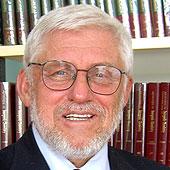John Starrett, Joanne Bronson, John Martin, Muzammil Mansuri, David Tortolani
Innovative prodrugs of phosphonates
European Inventors of the Year 2006 in the category "New EU member states"
These days there is seemingly no getting away from the importance of producing and stockpiling antiviral drugs for a plethora of existing and future diseases and viruses. For a while it was SARS, currently we’re in the grip of a mounting panic over the H5N1 strain of bird flu, and HIV/AIDS continues to devastate lives around the world.
As a result, scientists are constantly trying to find new and innovative ways of dealing with such infectious diseases. One key aspect of their work is the development of drugs that can effectively help body cells affected by a disease while at the same time remaining benign to healthy cells.
This is where a breakthrough on the so-called prodrugs of phosphonates by John Starrett and others has made significant inroads. What’s novel about the work of these scientists, which was patented in 1998, is that it enables the activation of some phosphonates, or chemical compounds, by placing chemical groups on the administered drug which then activate the desired effect.
In short, Starrett and his team managed to change the building blocks of the natural molecules setting free anti-viral properties. The patent is now held by the US pharmaceuticals firm Bristol-Myers Squibb, and Starrett works for the company as a research fellow in the Neuroscience Chemistry group.
Indeed, while the virus may still be able to recognise the drug that is making its way into the bloodstream, the different makeup of the building blocks means the virus can no longer replicate and spread. While that sounds simple enough, it’s actually a highly skilful process.
“The art is to put the right entity of the prodrug on the right side of the drug,” said Jan Balzerini, professor of virology and chemotherapy at the Rega Medical Institute in Leuven, Belgium.
In the past, doctors have struggled with the fact that some drugs also displayed distinct anti-tumour activity and a broad spectrum of antiviral possibilities. This required several metabolic steps to make them efficient. But doctors faced another problem: How to administer the drug.
“Not many patients like injections, and the effect is counter-productive,” said Patrick Chaltin, technology officer at the Rega Medical Institute. “But this patent, this so-called prodrug, can be given orally and it has a high solubility. And that’s what makes it innovative.”
Balzerini agreed that the novel orally active prodrugs turn it into a different ballgame altogether: “In the past, the problem was that only a few percent of orally absorbed phosphonate drugs filtered through to the area of the malignant cells they were supposed to get to. The development of this prodrug, however, increases that selectivity ten- or even twenty-fold.”
Not only does the theory sound great, but the invention also works in practice. In 2001, US biopharmaceutical company Gilead Sciences launched the drug Hepsera, a prodrug to treat chronic infection with hepatitis B virus (HBV) in adults. And it seems to be doing exactly what the patent’s inventors – one of whom is John Martin, now CEO of Gilead – had anticipated: Blocking an enzyme that is necessary for the virus to replicate in the body helps stop the hepatitis B virus from multiplying.
“Previous medicines used to treat chronic hepatitis B were largely ineffective due to their poor toleration or the fact that the virus became resistant to them,” said Professor Stephanos Hadziyannis, MD of the Medical Department at Henry Dunant Hospital in Athens. “However, with Hepsera we’ve noticed a marked improvement in efficacy against the virus and a distinct slowdown of the infection.”
Sales and revenue figures for 2004 also show that this particular prodrug is making an impact. In the United States, Hepsera achieved annual revenue of almost $56 million, a 61 percent increase over 2003. Worldwide the product achieved revenue of $113 million, an increase of 12.3 percent over the previous year.
According to Gilead Sciences, more than 400 million people worldwide suffer from chronic hepatitis B. An estimated one million die each year as a result of the infection. This means that for many patients, the breakthrough on prodrugs will help ease their suffering.
Contact
European Inventor Award and Young Inventors Prize queries:
european-inventor@epo.org Subscribe to the European Inventor Award newsletterMedia-related queries:
Contact our Press team#InventorAward #YoungInventors



